| The Orange Hut Project See the latest plans for the Orange Hut Barbeque here 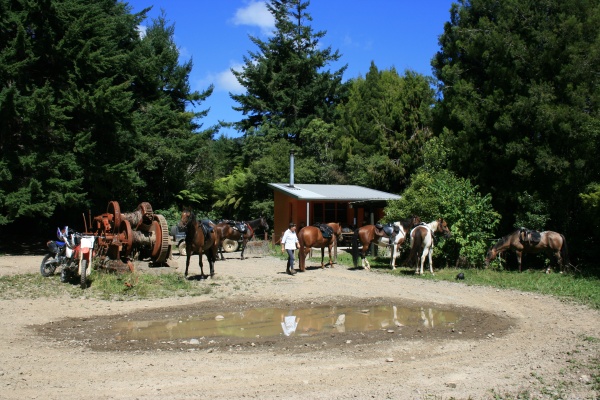 To date, we have a new hut, a new toilet with (albeit intermittent) water supply and wash-basin. A partially resurfaced car park that still needs work, and a camping area that some regard as a play area to do donuts in – sadly.As many will know, the original orange hut was built as a forestry workers hut in the middle of last century. Past its sell-by date, ARAC replaced it with a brand-new structure (read below if you are interested), but sadly after several years, someone burnt it down.Not to be beaten, ARAC in conjunction with Greater Wellington Regional Council rebuilt the Orange Hut Mark III using concrete blocks and steel to avoid such things happening in future. 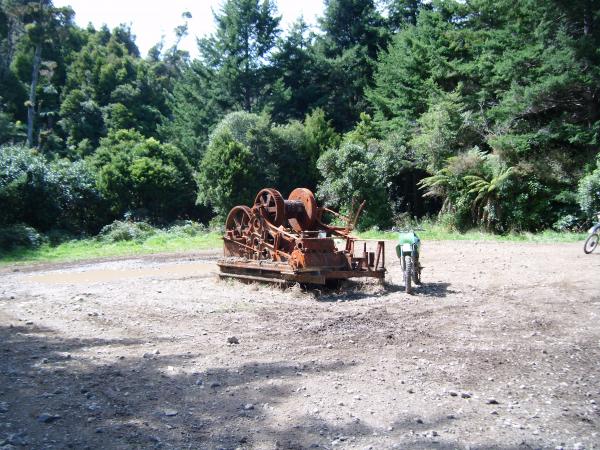 The attached barbeque was also very badly fire-damaged, and is in desperate need of refurbishment at present,More is planned, such as more fencing around the Hut, a better water-supply and a reseeded camp site. Some extra furniture may be drafted in as well.If there extra facilities you would like, just let us know using the Contact Us page above |
| The Orange Hut – a Chronology follows:- Orange Hut is Now ORANGE ! Finally after all this time, the Orange Hut is Orange once again. Many thanks to all those who have laboured so hard to make it all possible (again!), and a big thankyou to all the merchants who have donated materials so freely to make it all possible: 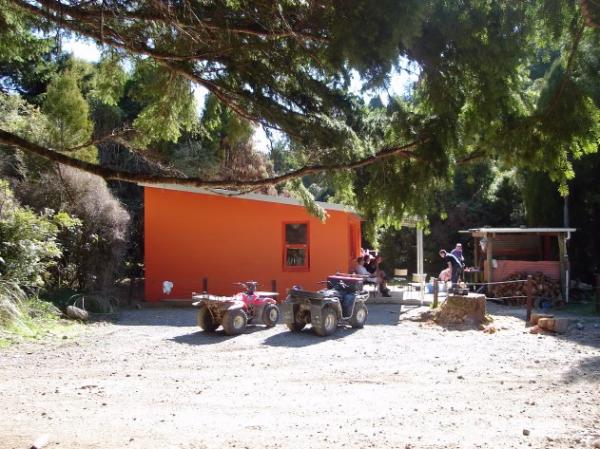 |
| Orange Hut Rebuild Begins The rebuild has begun – after much stalling and debate, the new hut is taking shape – even now this article will be well out of date as the block-laying gang make incredible progress on the rebuild 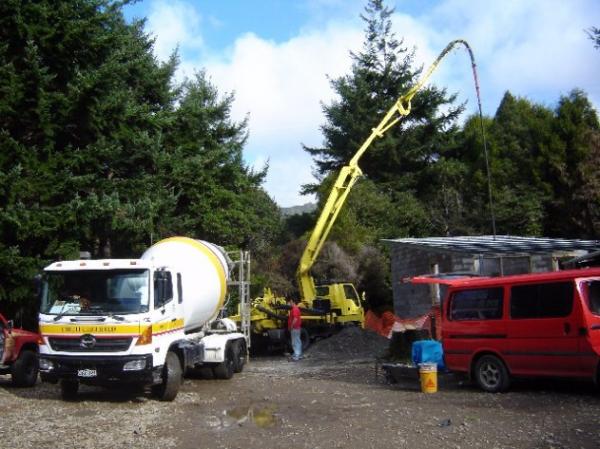 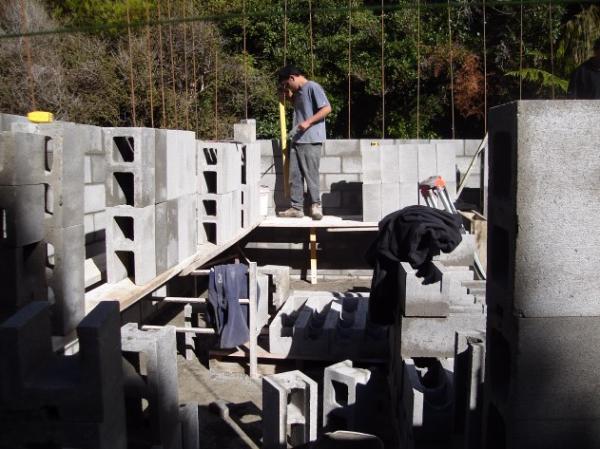 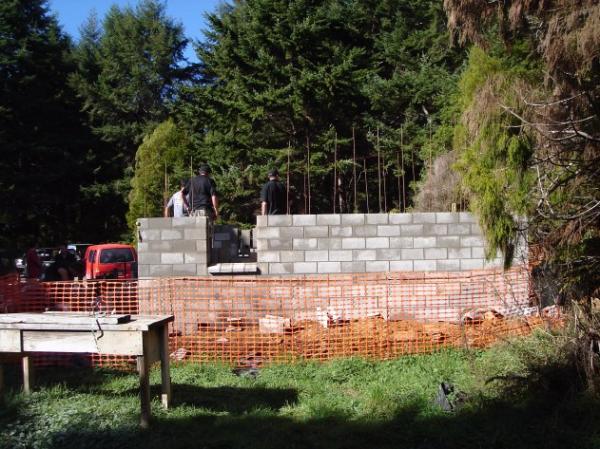 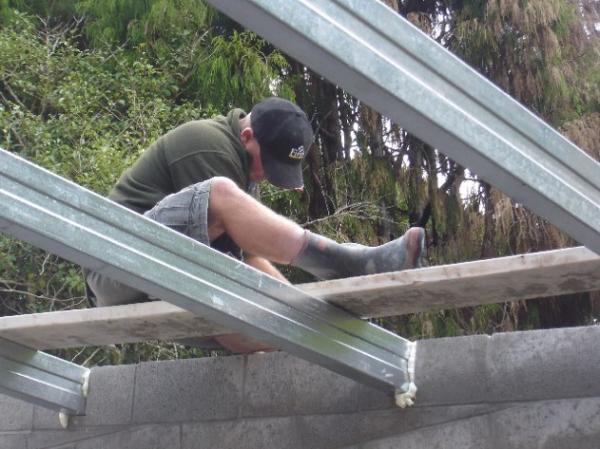 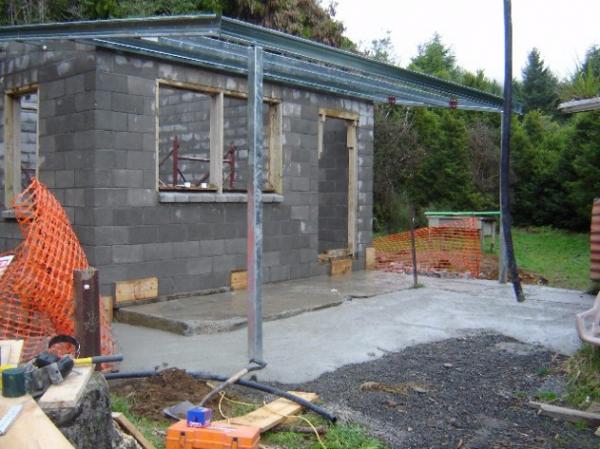 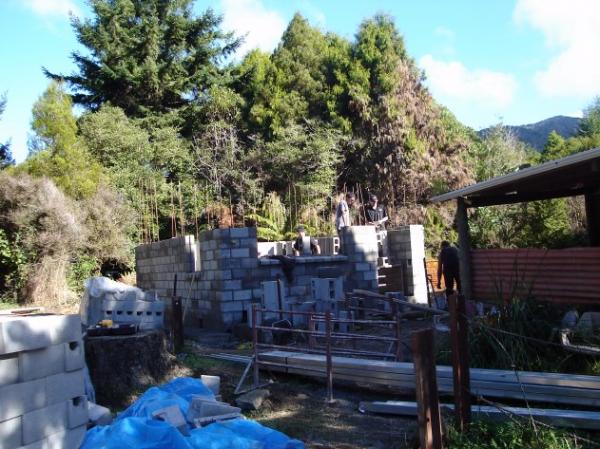 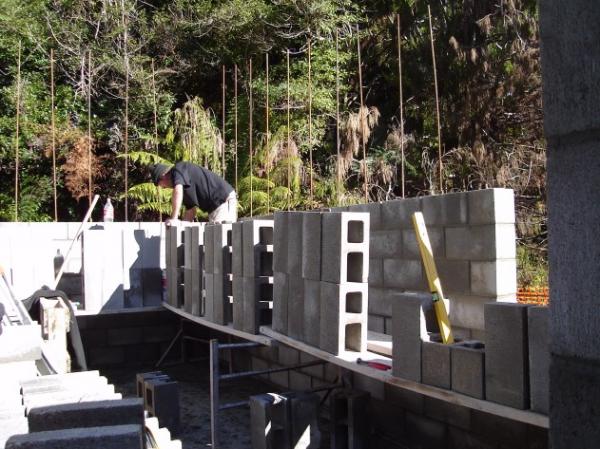 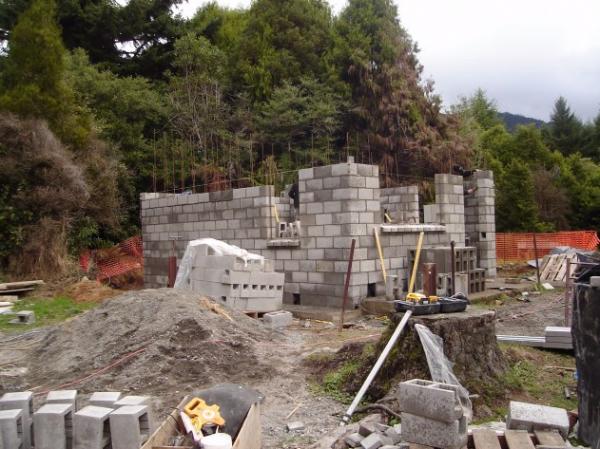 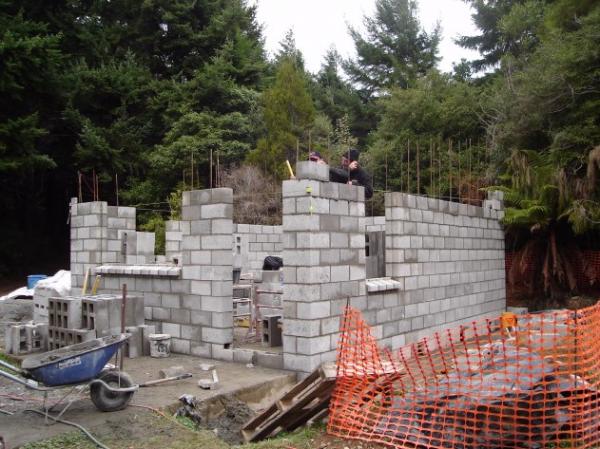 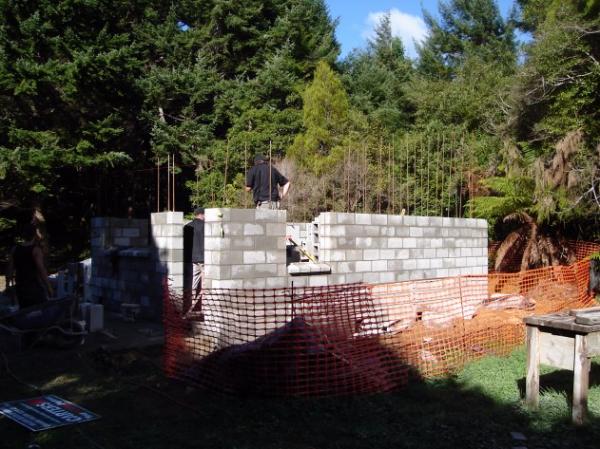 |
| Orange Hut Destroyed Sad to say, somone has decided that they wanted to enjoy a pyrotechnics display and has torched the Orange Hut (full history below)All that now remains of the once magnificent Orange Hut, is a smouldering pile of twisted steel. But, plans are afoot to rebuild – we have the means, we have the sponsors, we have the determination to replace the Hut with something even more resplendent. Watch this space for details as they unfold. Meanwhile, here’s a few photos of the carnage: |
| An Overview of the Akatarawa ForestThe “living document” produced jointly between ARAC and the Wellington Regional Council, the “Motorised Recreation User Code and Management Guidelines”, describes in detail those areas of the 16,500 hectare Akatarawa Forest where motorised recreation may be conducted. The forest has been divided into logical “Zones”, each of which corresponds to different permitted activities. These Zones are shown in the Council produced map below: – |
| More-or-less centrally within the Forest, lies a well-known meeting point for recreational users, The Orange Hut.Time had been less than kind to the old Hut, and whilst many users hold fond memories of the structure, it was seen has having survived well beyond its “sell-by date”.Seen in the background here, the rather rude original shelter is composed of now rotting timbers held togetherrather sparingly by heavily corroded long-run steel. (The new pad for a barbeque is in the foreground,with timbers for the replacement hut being unloaded after transportation by ARAC volunteers) This then is the location of the first of what we hope will be many new projects, but for now we will concentrate on The Orange Hut project…..Goals and aims of The Orange Hut ProjectThe main aims of the project focus on bringing recreational service supplier and target user groups closer together. Whilst the Wellington Regional Council had care and control vested in the management of the whole Akatarawa Forest, there was not the level of user interaction that we see today. One way to achieve a more integrated approach would demand entering into a closer, more harmonious working relationship with its recreational users. But How?The clash of ideologies begun in early 1997 had all the potential to create even greater rifts between user groups and Council. But the bold initiatives put forward, with a genuine desire to seek out mutually acceptable solutions to management problems, paved the way for ongoing constructive dialogue. Out of this dialogue came the idea to rebuild the Orange Hut.With Council providing the designs, the resource and building consents, and generally paving the way through all the necessary red tape, all ARAC had to do was provide the materials and manpower to construct it.Over the next year, most building suppliers were visited and invited to contribute. Many recreation companies provided cash or other input. The generosity of all was magnificent. So much so, that everything needed was accumulated and stockpiled at a shed in Queen Elizabeth Park, a shed donated free of charge by Wellington Regional Council.How do these goals and aims meet the community needs?The answer is probably twofold:-Councils requirement to forge strong and harmonious links with its user community is immeasurably achievedUsers not only gain a new Hut, but more importantly, become stake-holders in the future of recreation within the Akatarawa ForestIt would have been very easy for Council simply to invest say $20,000 in providing a new hut. This would have been the easiest solution by far, but would have missed the opportunity to create user involvement. Indeed, it is an excellent indicator to note that even after more then twelve months use, not one single piece of graffiti has been made anywhere in, on or around the new Orange Hut. Something that truly has exceeded all expectations of either Council or ARAC. The Orange Hut Facilities The Orange Hut project can be viewed as two separate stages. Firstly, the construction phase. Whilst of a finite duration, this phase more than anything before or since, served to created or at least helped to create a new spirit of cooperation.Allowing users the option of “buying into” management practices was a bold incentive by Council, yet has been proven to pay dividends in the new feelings of “pride” and “ownership” many users now feel. The second stage is really the final delivered asset, the Hut itself. Providing a central meeting point, overnight accommodation, survival shelter or somewhere simply to put your feet up and enjoy the facilities (soon to include a covered barbeque area). This is now taking shape as a major gem in the Regional Council repertoire, and a gem in the mindset of the Forest user groups. |
| More than any extrapolated tangible benefit, is the incredible intangible feelings of “pride”, “ownership”, “family” and general “belonging” now inherent amongst the user groups. User Groups and Participant Numbers ARAC brings together normally disparate user groups, including Trail Bike Riders, Quad or Farm Bike Riders, 4WD drivers, horse-riders and mountain bikers. There are even a few walkers and trampers scattered amongst its diverse membership. Having grown to around 3,500 Members, and still growing, ARAC has become one of the central contact points for Regional and Territorial Authorities as well as the Conservation Department in the greater Wellington Area. Most ARAC members are active recreational users, and the vast majority will be regular users of the Akatarawa Forest. User surveys have been conducted by Council, and are to be repeated in attempts to extrapolate usage statistics, participation styles and general user demographics. How the Orange Hut Encourages Participation We have already seen a new feeling of “ownership” and a general willingness to contribute amongst the user fraternity. But the process is ongoing. Work at the hut continues, and will continue for some time. The new barbeque area will take this season’s efforts. Providing improved camping facilities, children’s recreation area, signage, feature displays and information boards are all in the planning stages. As each of these is brought to fruition, volunteers readily appear to make ideas a reality. The willingness of users to become involved is self-evident testimony as to how one central concept, The Orange Hut, stimulates and encourages the fullest possible user participation. How Customer Demand and Feedback is Responded to Formal liaison meetings are held every four months between small delegate groups from Council and ARAC. This forum serves to allow an exchange of views, to improve management and to help disseminate user information. Several examples of how Council have been able to respond to user feedback can be seen in other parts of the Forest: – Council have responded to a request to improve recreational facilities by providing a bypass to a particularly muddy section of track. Users who want to “have a go” along the old challenging route may do so. Others may take to the new all-weather diversionARAC Members identified a derelict log hauler left over from a bygone age, and asked Council’s permission to relocate it to the Orange Hut site to create a feature exhibit. Council not only agreed, they provided a machine to tow it the three kilometres into place. It will become yet another focal point for interested groups to help restoreDuring inclement weather, when track conditions become non-sustainable, ARAC and Council jointly agree on selective closure of parts of the Forest. This would have been unheard of five or six years ago, yet is now the norm. All parties want to be able to preserve the current facilities for future generations to enjoy.New areas of the Track Network are constantly being researched and reviewed. Where use of these new areas is considered desirable, ARAC and Council jointly agree on the protocols necessary to open them up for recreational use. Where such use is considered inappropriate, measures are set in place to prevent such inappropriate use. In essence then, the new spirit of cooperation is proving to be truly a two-way street, with Council and Users alike benefiting from a full and frank exchange of opinion. Financial Objectives and Practices ARAC is a non-profit making organisation, and is fully funded by donation. It levies no membership fees, thereby encouraging as many members to subscribe as possible, whilst totally eliminating any “value-for-money” arguments seen in other organisations. This will naturally be a different perspective to that of Council, yet ARAC readily acknowledge that Council has a duty to its ratepayers to gain this very same “value for money” from its recreational budgets. Some level of cost recovery is anticipated, and this has recently been the subject of a major policy review by Council. New fee structures have been created more closely related to actual cost (although still heavily subsidised), and ratified by the regular ARAC/Council tri-annual meetings. Achievements and Outputs As has clearly been demonstrated, the major achievement has been twofold: stronger user ties, and a new permanent structure, The Orange Hut. Outputs are still primarily measured as intangibles, but ongoing statistical usage surveys will almost certainly show what most users already know to be fact, user numbers are increasing rapidly. As interest in the Forest grows, and Council’s investment in improved facilities, better infrastructure and greater recreational opportunities is realised, the user satisfaction levels can only increase. This is simply one project, but it is proving to be the catalyst that is setting the standard by which to judge all others. It is also proving to be the springboard for user |
ARAC
Akatarawa Recreational Access Committee Inc
